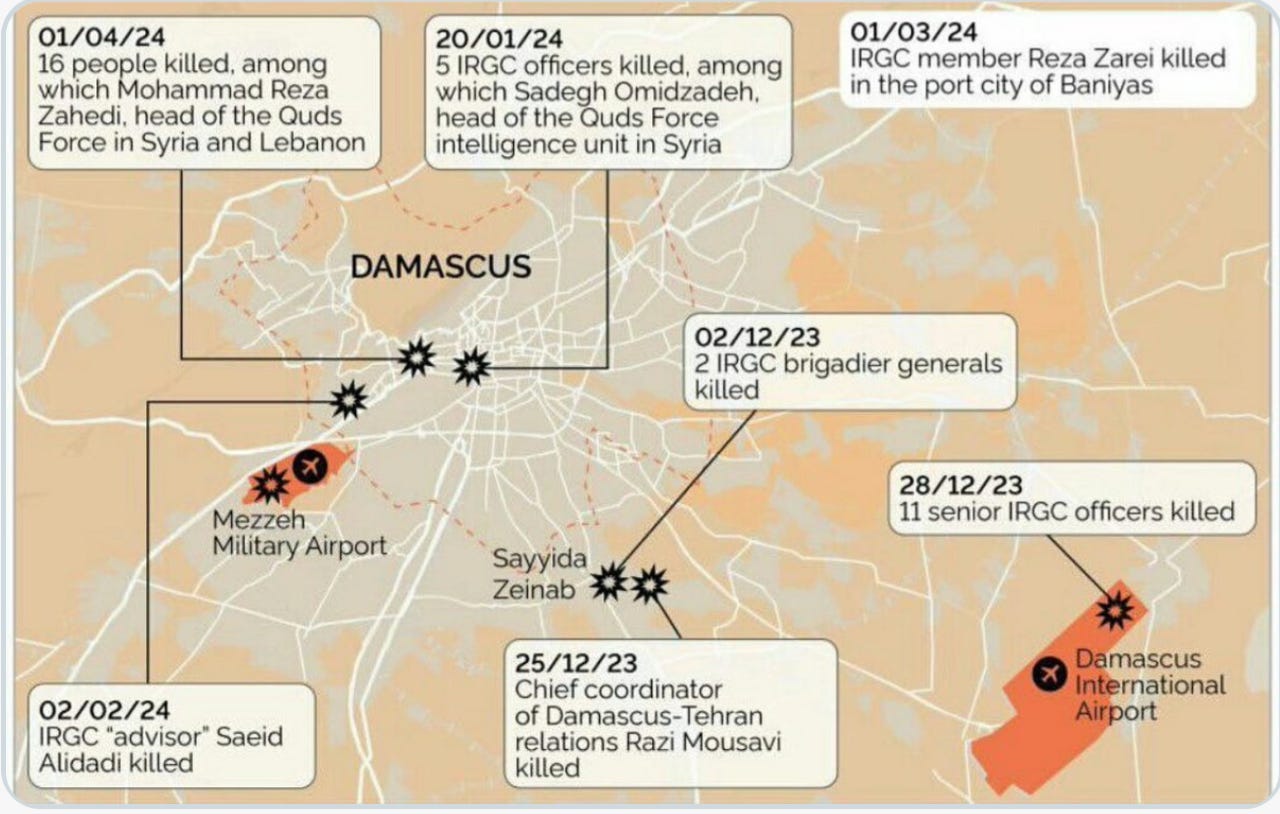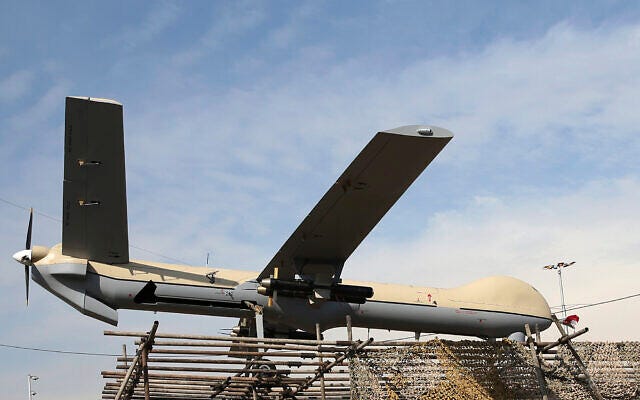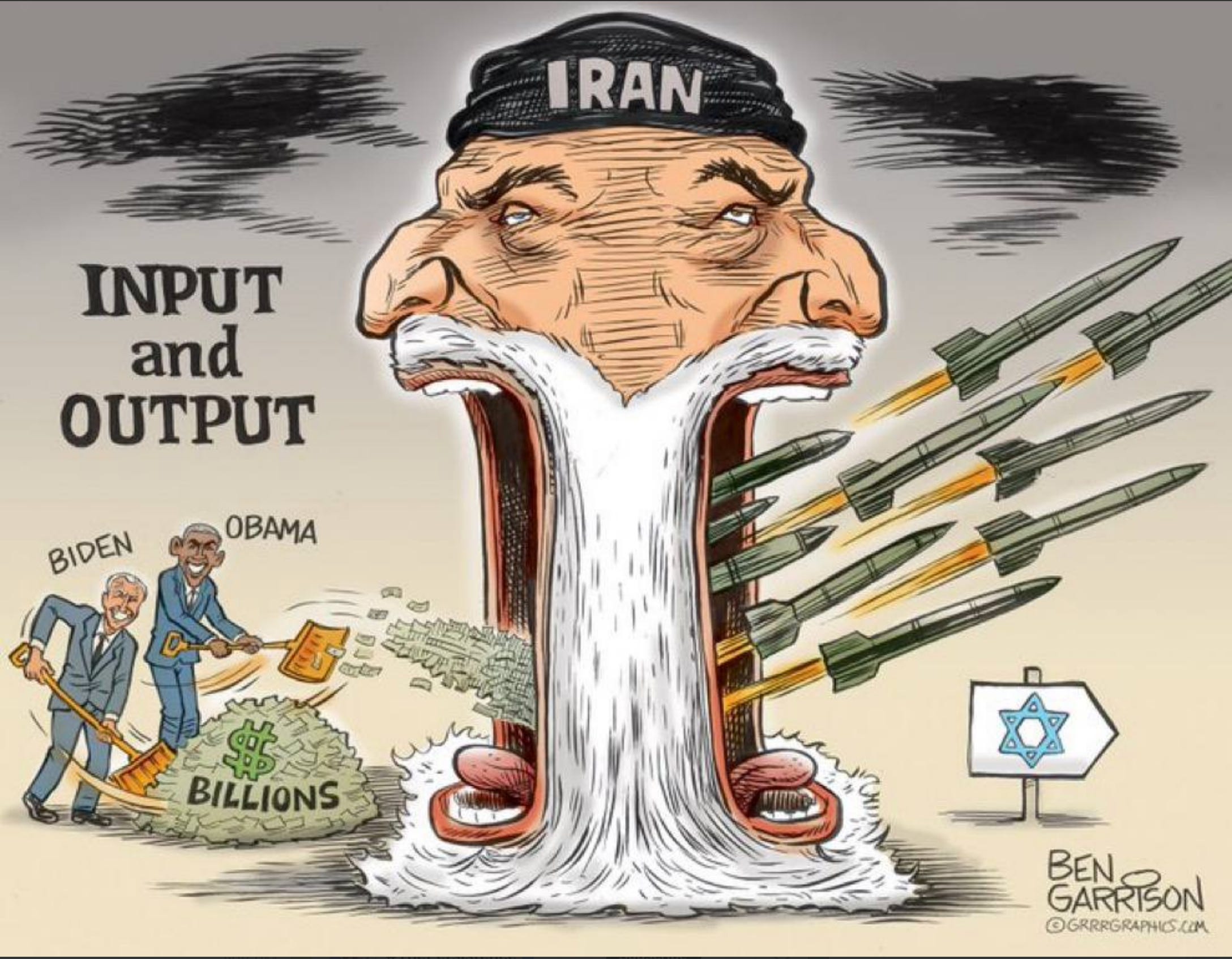Reinette Senum’s Analysis of Iran’s Retaliation – A Demonstration and a Warning
Mon 8:41 am +01:00, 15 Apr 2024 1| ReinetteSenumsFoghornExpress@substack.com |
Strategic Showdown: A Comprehensive Breakdown of Iran’s Calculated Strikes on Israeli Soil & the Growing Possibility of WWIII
Unpacking the implications of Iran’s missile strikes as a demonstration of power and a warning to Israel and its allies.
| |
| |||||||||||||||
I know many people are on edge from yesterday’s developments between Israel and Iran. Last night and earlier today, I devoted my time to gathering and analyzing the most pertinent information on the recent developments between Israel and Iran. I have aimed to piece together a coherent narrative of the events that have unfolded over the last 24 hours. My goal with this piece is to shed light on the complexities of this dire situation, offering clarity to those seeking to understand the intricacies of a mounting political powder keg.
AN ISRAEL-IRAN CONFLICT ANALYSIS
In a jaw-dropping display of military strategy yesterday, Iran showcased its capability to penetrate Israeli and Western defense systems through a meticulously planned missile attack. This operation was not just about retaliation but also about sending a clear message to Israel and its allies: Iran can inflict significant damage if provoked.
The sequence began with Iran deploying numerous drones as a distraction,which occupied British and American pilots for hours. This was followed by a more severe ballistic missile attack targeting less populated areas and specific military bases in Israel, including the Nevatim IAF base—a strategic point linked to the initial conflict trigger, Israel’s attack on the Iranian embassy in Damascus.
Despite Israeli media portraying the event as a victory (I have been covering the end of the State of Israel as we know it HERE), security insiders are aware of the reality: Iran has successfully demonstrated vulnerabilities in the Israeli missile defense system. The strategic timing and execution of the attacks have significant implications, not just for Israel but for all American bases and allies, emphasizing their potential vulnerability.
Iran commenced its operation by deploying approximately one hundred drones.
These drones were described as relatively primitive and slow, which is a crucial tactical decision. By choosing slower drones, Iran provided Israel with several hours of advance warning. This might seem counterintuitive in a military strategy, but it served several purposes:
- Distraction: These drones occupied the attention of British and American pilots overnight, diverting resources and focus away from other, more critical areas.
- Resource Depletion: Keeping enemy forces engaged with a large number of low-threat targets can exhaust their operational capabilities and readiness, potentially lowering their guard for what is to come next.
- Intelligence Gathering: Observing the response tactics to the drone swarm would provide Iran with valuable data on how Israel and its allies prioritize and handle aerial threats.
2. Subsequent Launch of Ballistic Missiles
Approximately five hours after the drone deployment, Iran escalated the operation by launching dozens of ballistic missiles targeted primarily at the Negev desert, a strategically chosen sparsely populated area. This choice minimizes potential civilian casualties while still maintaining the threat and demonstration of capability. The missiles served to test Israel’s missile defense systems under stress and further stretched their capacity. Most of these missiles were intercepted by U.S. and U.K. forces, but their launch was a setup for the next phase of the attack.
3. Deployment of Sophisticated Missiles
Following the initial wave of ballistic missiles, Iran launched a more sophisticated and accurate series of missiles aimed directly at high-value military targets, specifically the Nevatim IAF base. This base was notably significant because it housed the squadron that had attacked the Iranian embassy in Damascus, making it a retaliatory and symbolic target. The timing was critical:
- Strategic Timing: The sophisticated missiles were launched when Israel’s air defense might have been recovering from the earlier barrage, exploiting a potential moment of weakness.
- Technological Showcase: The successful hits by these more advanced missiles, despite the active defenses, demonstrated Iran’s capability to penetrate sophisticated missile defense systems like those deployed by Israel.
While mainstream media (MSM) declares Isreali’s Iron Dome impenetrable, it was clear that Israel’s Iron Dome failed to intercept seven hypersonic missiles, hitting the target of their choice and sending a “shot across the bow.”
Many Americans are asking if the $6 billion of unfrozen Iranian funds helped supply the Iranian arsenal. The agreement involving releasing approximately $6 billion in frozen Iranian oil revenue was reached as part of the prisoner swap deal announced on September 19, 2023, under President Biden’s helm.
4. Tactical Messaging
The entire sequence—from the drone diversion to the precise missile strikes—was not just about causing physical damage but also sending a clear strategic message:
- Demonstration of Capability and Resolve: Iran showcased its ability to plan and execute a multi-layered attack strategy, signaling its military sophistication and strategic patience.
- Psychological Impact: The successful penetration of Israeli defenses, particularly hitting a significant military base, serves to undermine the perceived invincibility of Israeli military capabilities among its population and its enemies.
Iran’s approach during this conflict was emblematic of modern hybrid warfare tactics, combining psychological operations, technological testing, and conventional military strikes. The operation was designed to test and expose the limitations of Western and Israeli defense systems while also adjusting their own strategies based on the response dynamics observed during the conflict. This kind of layered, calculated approach not only achieves tactical objectives but also shifts the strategic balance, influencing future engagements and defense planning within the entire Middle East.
POLITICAL & MILITARY REPERCUSSIONS
The geopolitical ramifications are profound. Israel’s War Cabinet is set to convene not at the Prime Minister’s Office but in an army bunker—a move signaling the gravity of the situation. This meeting aims to formulate a response to Iran’s actions, complicated by the U.S. President’s explicit refusal to support any retaliatory attack on Iran — for now. This stance leaves Israel in a precarious position, potentially isolated without its strongest ally’s direct support in a military engagement with Iran.
The fallout from this event reshapes the Middle East landscape. Iran’s actions demonstrate a strategic capability and willingness to confront Israeli power directly, challenging the long-held notion of Israeli military invincibility. This incident has not only tactical but also psychological impacts, as the Israeli public faces the reality of vulnerability—a stark contrast to the image of invincibility portrayed by their government.
CALL FOR DE-ESCALATION SMOKE & MIRRORS
The current scenario offers Israel a chance to recalibrate its approach. Iran considers its response to be closing the chapter on this particular skirmish. It would be prudent for Israel to accept this closure, seeking peace and stability rather than escalating further conflicts that could spiral out of control.
The fundamental lesson here is the dire need for diplomacy over military action. Engaging in dialogue and addressing the core issues that lead to such conflicts can pave the way for a more stable and peaceful Middle East. It’s a critical moment for Israel to reflect on its strategies and opt for a path that ensures long-term security and peace for its people and the region.
Can I trust that the Biden administration will refrain from provoking conflict in the Middle East, playing merely the role of a “sensible” big brother until a ‘Casus Belli’—an act or event provoking or used to justify war—emerges to justify an escalation with Iran? My skepticism remains high. There is little reassurance that the Biden Cabal and the State of Israel’s Prime Minister Netanyahu will halt their provocations until they get what they want: WWIII and the end of America as we know it.
As emphasized in a previous episode of my podcast, ‘If the Lights Go Dark, Call Out the CIA & the State of Israel,‘ do not believe the ‘official narrative’ used to justify war with Iran, especially when it emerges from any type of Black Swan event in the U.S.”
It’s all a shell game, and I’m hoping and praying we don’t get played this time.
Now, as I always encourage commenters, please add to this information. Your participation only enriches this conversation and a deeper understanding.



















That all makes sense to me danceaway. Iran seems to have demonstrated effective military supremacy over the west. So any further provocation could be very counter productive for the hegemon and it’s satraps. Hopefully that makes a provocation less likely. But these satraps are lunatics, so who knows….
See the destruction of Ukraine’s energy system. Destroyed by Russia after Ukraine foolishly gave Russia an open goal with their stupid terrorist attacks on the Russian energy systems. Reap what you sew….
It’s getting harder and harder for them to hide their obvious strategic losses from Western populations too. It’s in your face now in both Palestine and Ukraine anyway. Reality always bites in the end